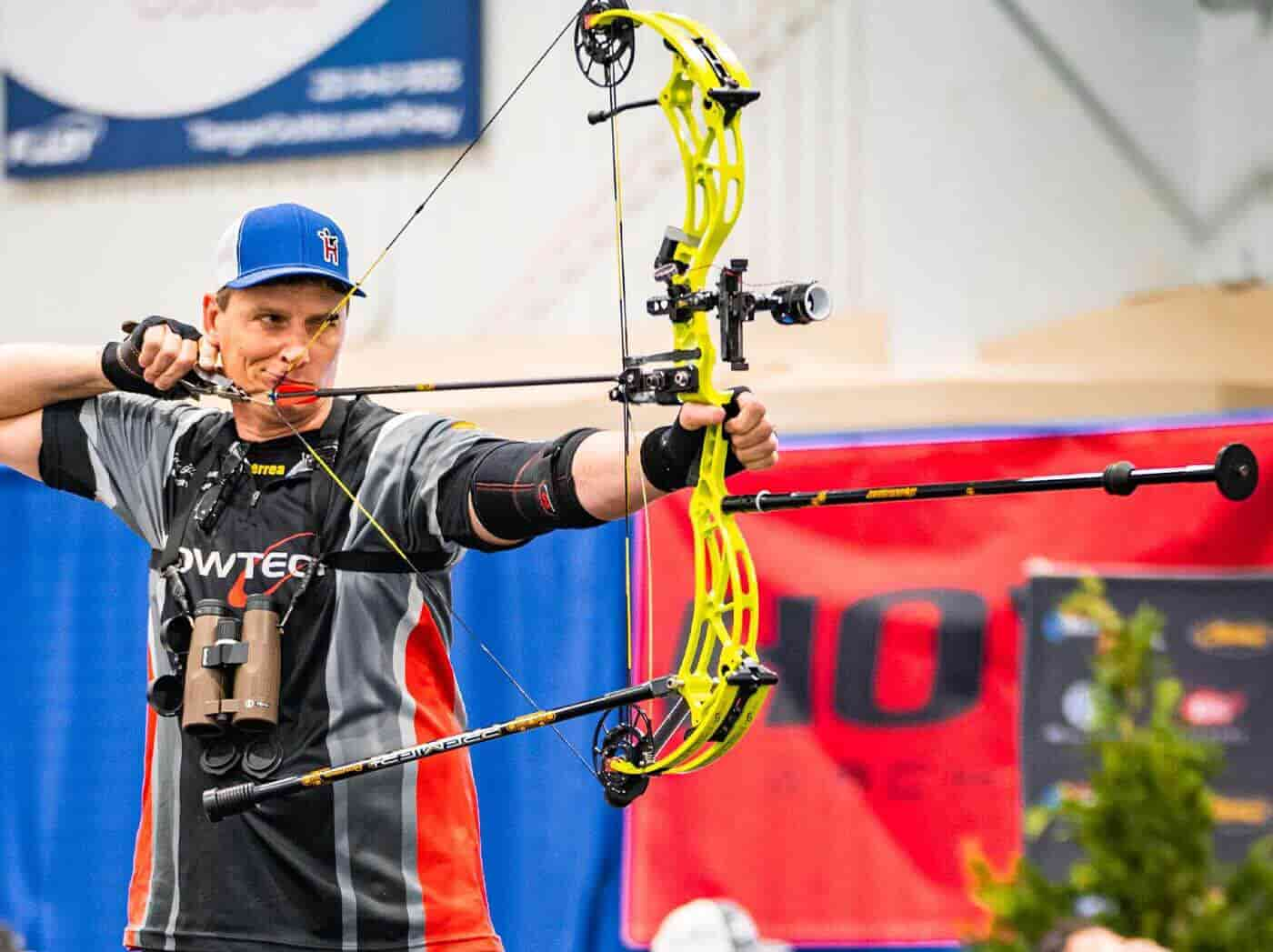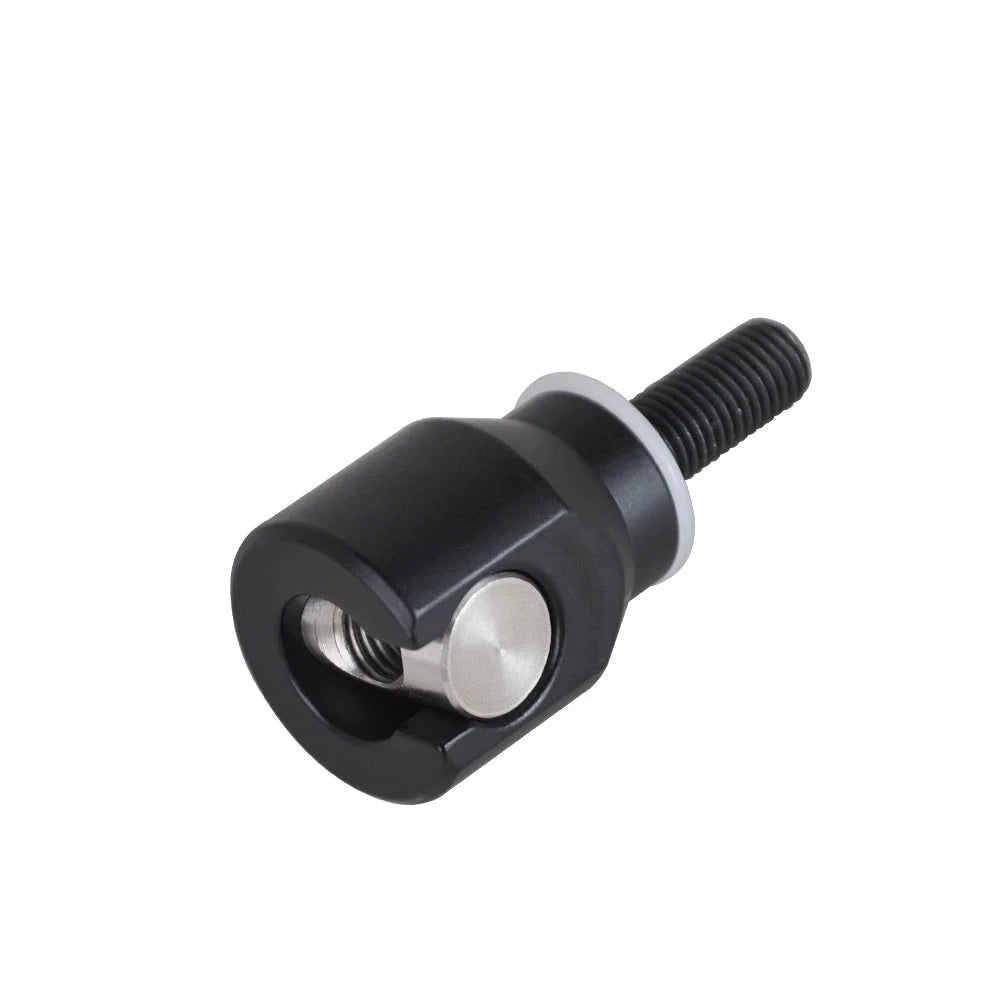Bow Stabilizer : Your Ultimate Guide to Improved Archery Accuracy
Bow Stabilizer : Your Ultimate Guide to Improved Archery Accuracy
Blog Article
Increase Your Archery Efficiency: The Ultimate Guide to Bow Stabilizer Setup
Enhancing your archery performance needs a careful method to every aspect of your tools arrangement. Amongst the various parts that add to precision and security, the bow stabilizer plays a critical function in fine-tuning your shot implementation. Understanding how to optimize your bow stabilizer arrangement can cause considerable enhancements in your general precision and uniformity on the array or in the field. As we explore the details of picking the ideal stabilizer weight, positioning, and fine-tuning strategies, you will certainly discover the key to opening your complete capacity as an archer.
Recognizing Bow Stabilizers
In the realm of archery equipment, the function and function of bow stabilizers stand as crucial elements for enhancing shooting precision and stability. Bow stabilizers are developed to decrease bow torque, decrease resonances, and help in holding the bow steady throughout the intending and release procedure. By connecting a bow stabilizer to the riser of the bow, archers can experience improved equilibrium and reduced hand shock, causing more regular and accurate shots.
The key function of a bow stabilizer is to wet any resonances that occur upon launching the arrow. This reduction in resonance not only boosts the shooter's comfort yet also assists keep focus and control throughout the shot cycle. In addition, bow stabilizers aid in counteracting the weight of accessories affixed to the bow, such as sights, quivers, and arrow relaxes, guaranteeing optimum weight circulation for improved security.
Recognizing the mechanics and advantages of bow stabilizers is crucial for archers seeking to adjust their shooting performance and achieve higher precision on the array or in the field.

Choosing the Right Stabilizer Weight
Choosing the proper weight for your bow stabilizer is a critical aspect of enhancing your archery configuration for boosted capturing efficiency. The stabilizer weight straight affects how effectively the stabilizer decreases vibration and supports your bow throughout the shot. When selecting the right stabilizer weight, it's important to consider your capturing style, bow equilibrium, and personal preferences.
Lighter stabilizers, normally weighing between 3-6 ounces, are favored by archers who focus on ability to move and fast target procurement. These stabilizers are excellent for seekers or those that fire in difficult terrains where movement is essential. On the other hand, heavier stabilizers, ranging from 8-12 ounces or even more, are favored by target archers looking for optimum stability and decreased bow motion. The added weight helps hold the bow steadier during the aiming procedure and decreases the results of torque on the bow.
Eventually, the most effective stabilizer weight for you will certainly depend upon your shooting objectives and choices. Exploring with different weights and locating the one that uses the ideal equilibrium of security and maneuverability is vital to improving your archery performance.
Installing Your Bow Stabilizer
To correctly mount your bow stabilizer, make sure that you have all the required devices and comply with these detailed directions for a secure and reliable configuration. Beginning by determining the front stabilizer bushing on your bow riser. Most bows have pre-threaded openings for stabilizer installation. Next off, apply a small quantity of bowstring wax to the threads of the stabilizer bolt to stop it from loosening throughout usage.
Carefully thread the stabilizer right into the front bushing by hand, ensuring not to cross-thread it (bow stabilizer). When the stabilizer is well in position, moved here utilize an appropriate wrench to tighten it safely. Prevent over-tightening, as this can create damage to the bow or stabilizer
After setting up the stabilizer, check to guarantee it is straight and aligned with the bow. Some stabilizers include flexible weights or dampeners; readjust these according to your choices and shooting style. Finally, examination the acquiesce make sure the stabilizer is effectively minimizing resonance and improving your shot consistency.
Changing Stabilizer Placement for Precision
After installing the bow stabilizer securely, optimizing its setting is vital for boosting precision in your capturing. The placement of the stabilizer can considerably affect the balance and stability of your bow throughout the shot cycle. To change the stabilizer for ideal accuracy, start by trying out different settings. Moving the stabilizer closer to the riser can help in reducing the bow's total weight circulation, potentially boosting your aiming security. Alternatively, prolonging the stabilizer even more out can boost the bow's mercy and reduce the effects of torque on the shot.
When changing the stabilizer setting, think about the type of shooting you do. For target archery, a longer stabilizer placed additionally out may be useful for added stability throughout the aiming link process. On the various other hand, hunters might choose a much shorter stabilizer for better maneuverability in the area. Bear in mind to make tiny modifications and evaluate your arrangement after each modification to figure out the ideal placement for your shooting design and choices.
Fine-Tuning Your Stabilizer Arrangement

Furthermore, think about the placement of any type of dampeners or weights along the stabilizer rod. Moving these components closer to or better from the riser can alter the stabilizer's total result on your bow's equilibrium. Fine-tuning these information can assist minimize vibration, reduce hand shock, and enhance overall control throughout the shot implementation.
Routinely reassess your stabilizer setup as your capturing strategy progresses to ensure it continues to complement your kind and capturing goals. By finetuning your stabilizer setup with accuracy and treatment, you can enhance your bow's performance and elevate your archery skills to brand-new heights.
Conclusion
To conclude, maximizing your bow stabilizer arrangement is vital for enhancing your archery performance. By recognizing the objective of stabilizers, selecting the suitable weight, appropriately mounting and positioning the stabilizer, and fine-tuning its arrangement, you can improve your accuracy and uniformity in shooting. Take the time to explore different arrangements and modifications to find the arrangement that works ideal for you and assists you attain your archery goals.
Bow stabilizers are designed to lessen bow torque, reduce resonances, and assist in holding the bow steady throughout the aiming and launch procedure. By connecting a bow stabilizer to the riser of the bow, archers can experience improved equilibrium and reduced hand shock, resulting in even more consistent and exact shots.

The stabilizer weight straight influences exactly how properly the stabilizer decreases resonance and maintains your bow during the shot. bow stabilizer. By recognizing the purpose of stabilizers, picking the suitable weight, appropriately placing the stabilizer and installing, and tweak its configuration, you can boost your accuracy and consistency in capturing
Report this page